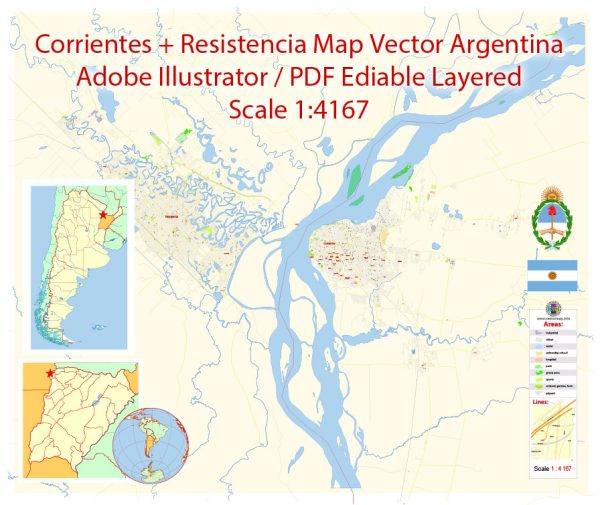Corrientes and Resistencia are two significant cities in Argentina, each with its own unique history and cultural significance. Here’s a brief description of their historical backgrounds:
Corrientes:
- Indigenous Inhabitants: Before the arrival of European settlers, the region where Corrientes is now located was inhabited by various indigenous groups, including the Guaraní people.
- Colonial Period: Corrientes was founded in 1588 by Spanish explorer Juan Torres de Vera y Aragón. It became an important stop on the route that connected the Viceroyalty of Peru with the Viceroyalty of the Río de la Plata. During the colonial period, it was a strategic point for military and trade purposes.
- Independence and the War of Independence: Corrientes played a role in the Argentine War of Independence from Spanish colonial rule, with notable figures like General José de San Martín and the local leader Juan Bautista Cabral being involved in various battles.
- Statehood: Corrientes became a province of Argentina upon the nation’s independence in 1816.
- Culture: Corrientes is known for its rich cultural heritage, particularly in music and dance. It is considered one of the cradles of chamamé, a traditional folk music genre.
Resistencia:
- Founding: Resistencia is the capital and largest city of the Chaco Province in Argentina. It was officially founded on January 27, 1878, by General José María Paz as a military outpost.
- Development: During the late 19th and early 20th centuries, Resistencia grew as a result of the expansion of the railway network in the region. This led to increased agricultural and commercial activities.
- Chaco War: The city gained importance during the Chaco War (1932-1935) between Bolivia and Paraguay. It served as a crucial supply and logistics center for the Argentine army during the conflict.
- Cultural Hub: Resistencia has become known for its cultural events, including the Fiesta Nacional del Chamamé, an annual festival celebrating the traditional music of the region. The city also hosts the Bienal Internacional de Esculturas, an international sculpture biennial.
Both Corrientes and Resistencia have rich histories, and they continue to play important roles in the cultural and economic life of Argentina, particularly in the northeastern region of the country.


 Author: Kirill Shrayber, Ph.D.
Author: Kirill Shrayber, Ph.D.